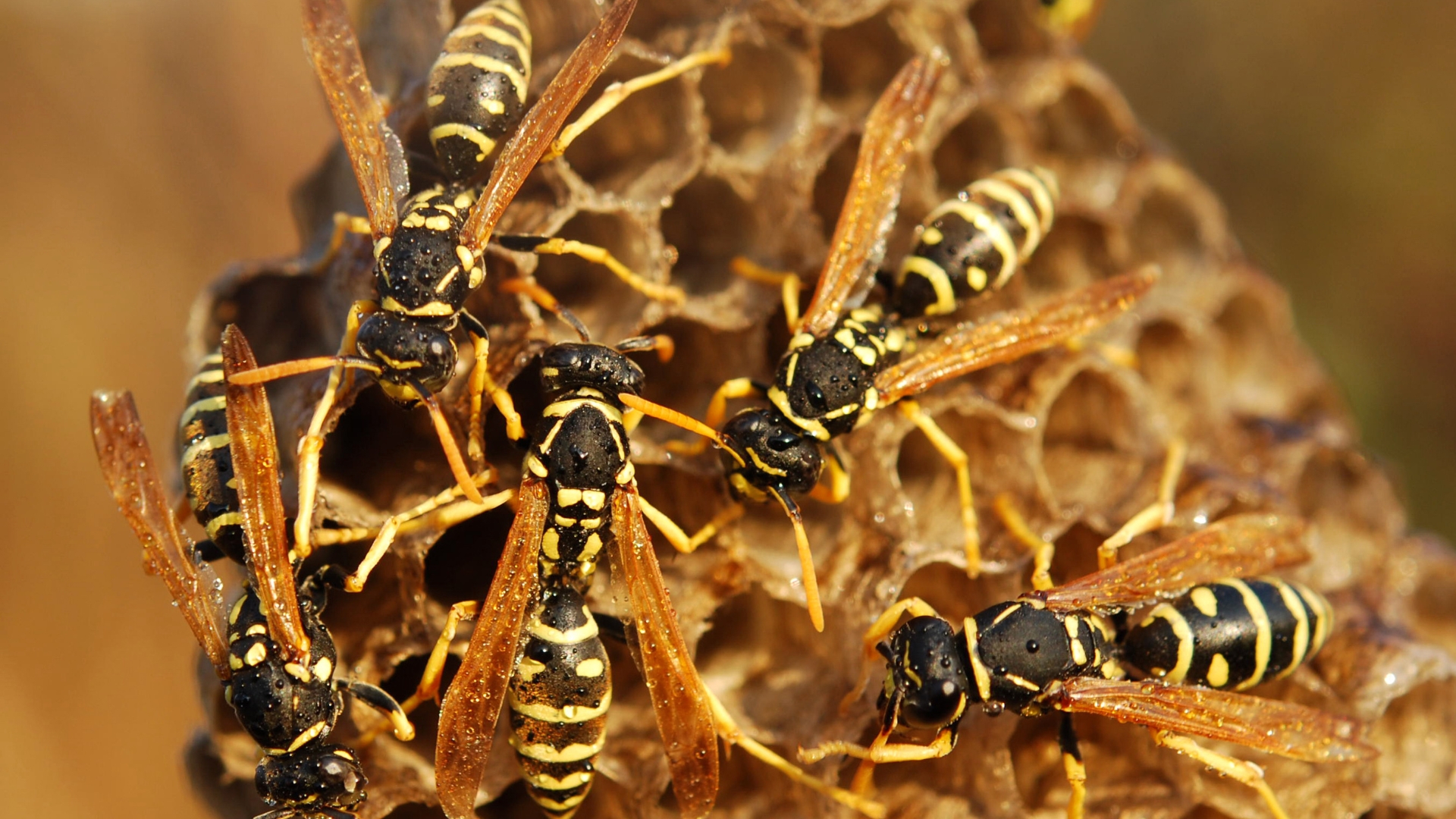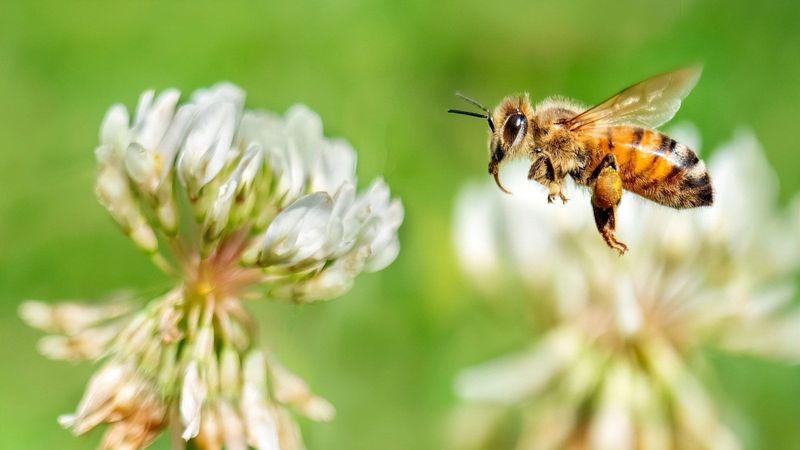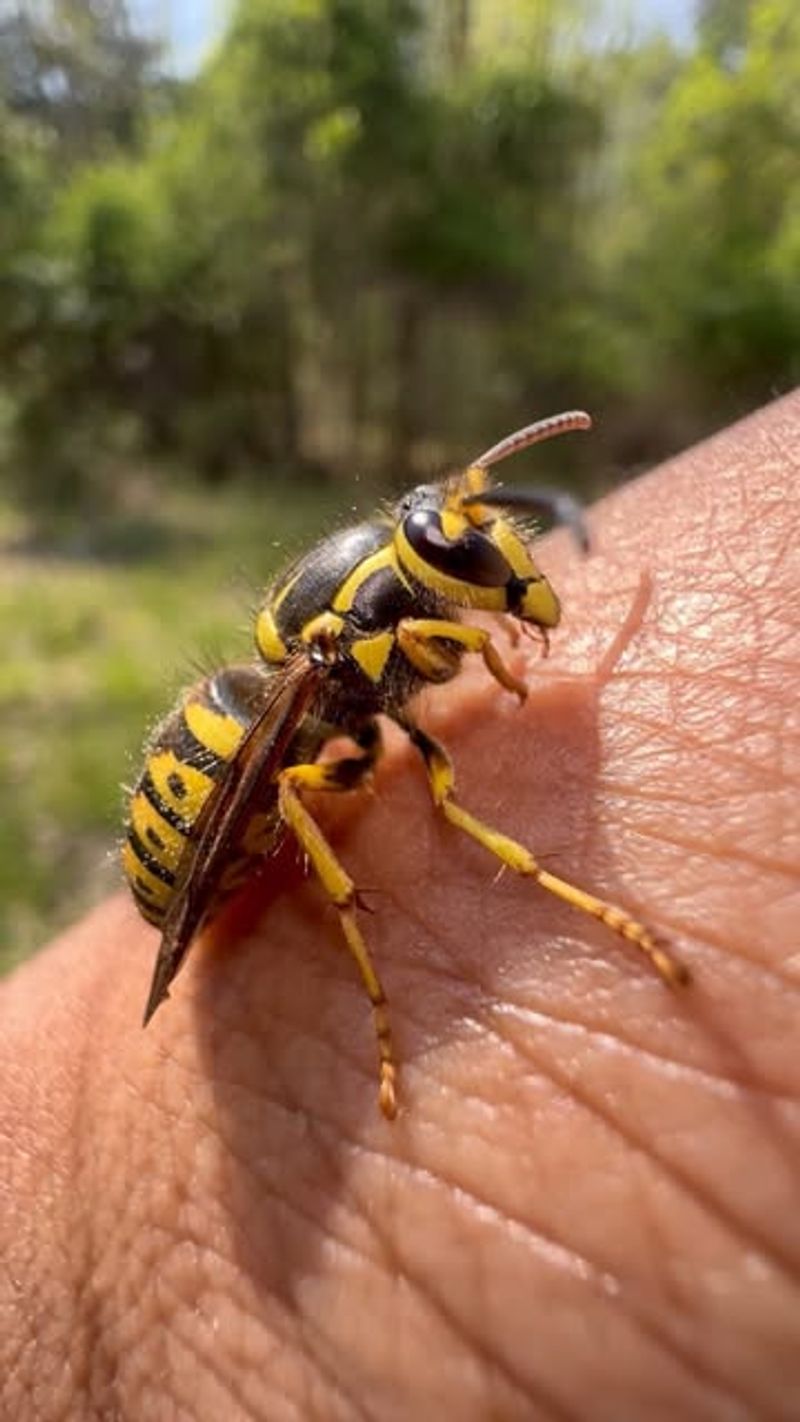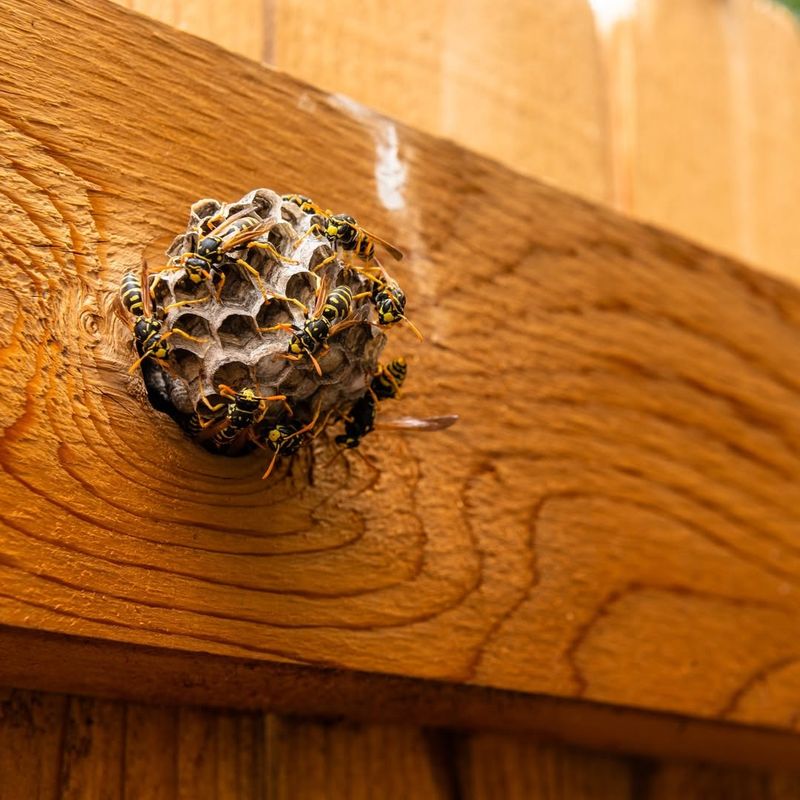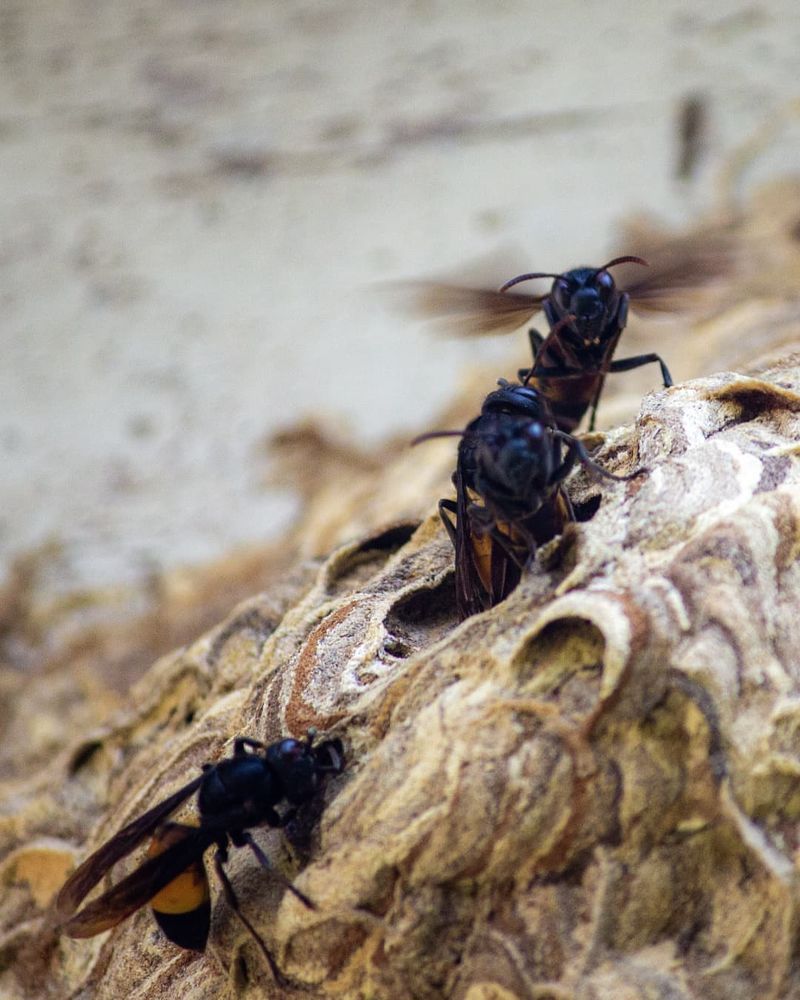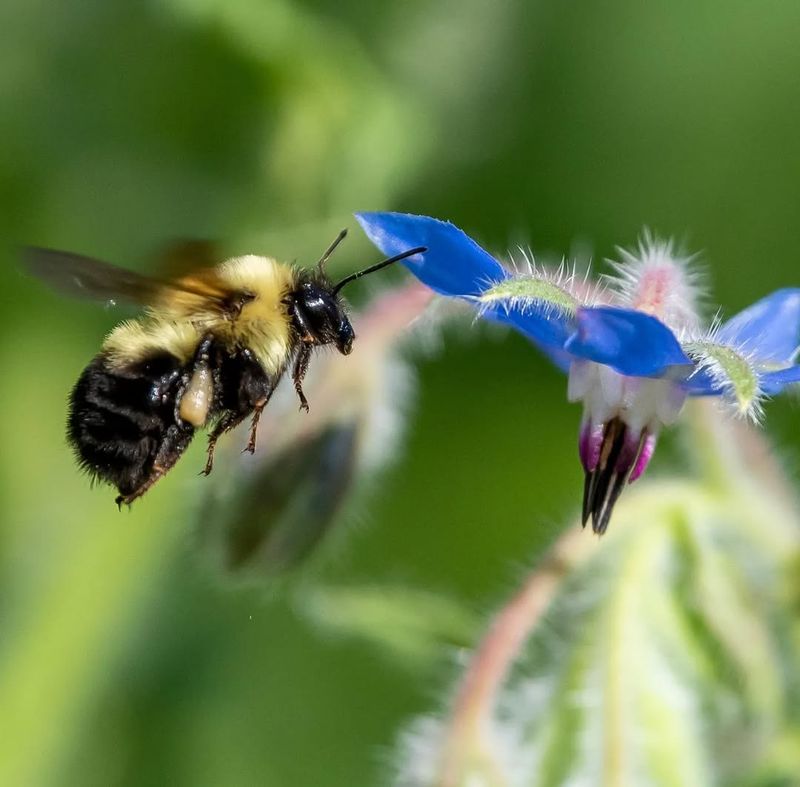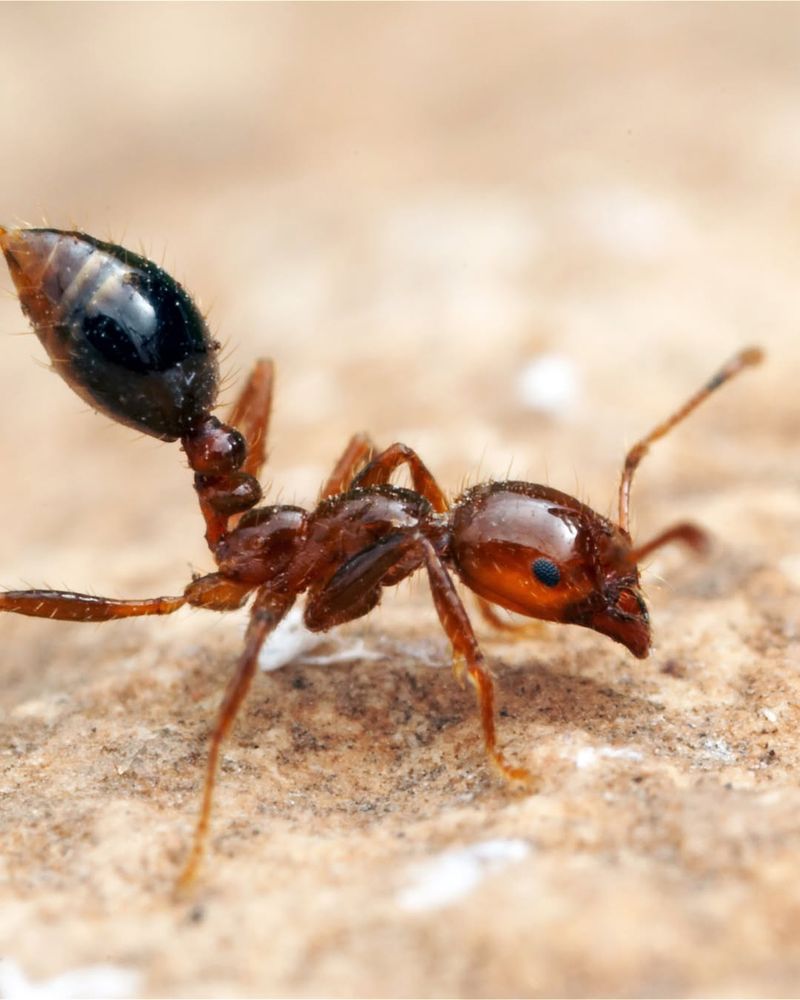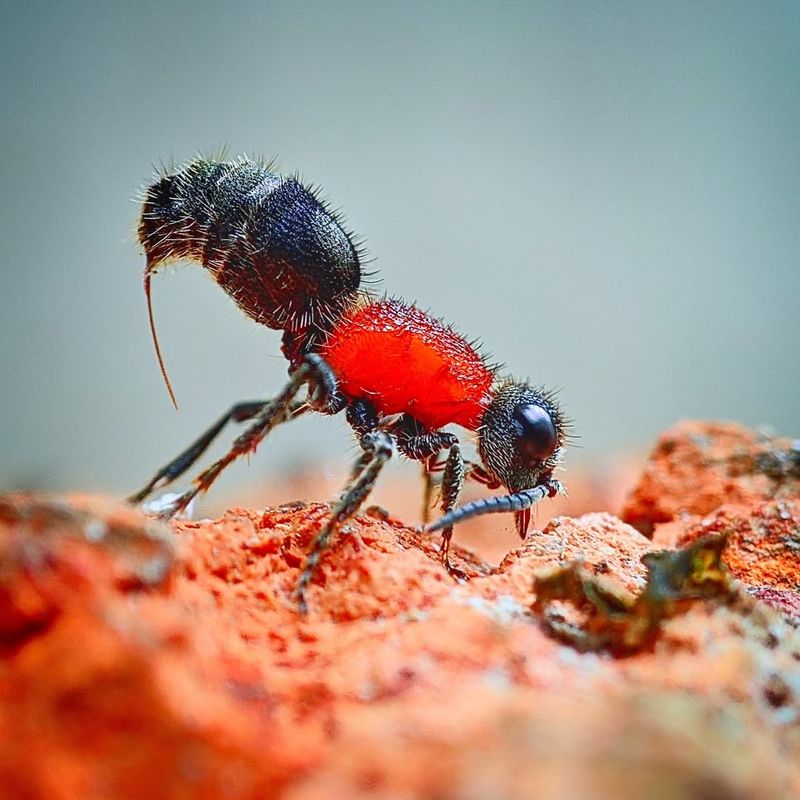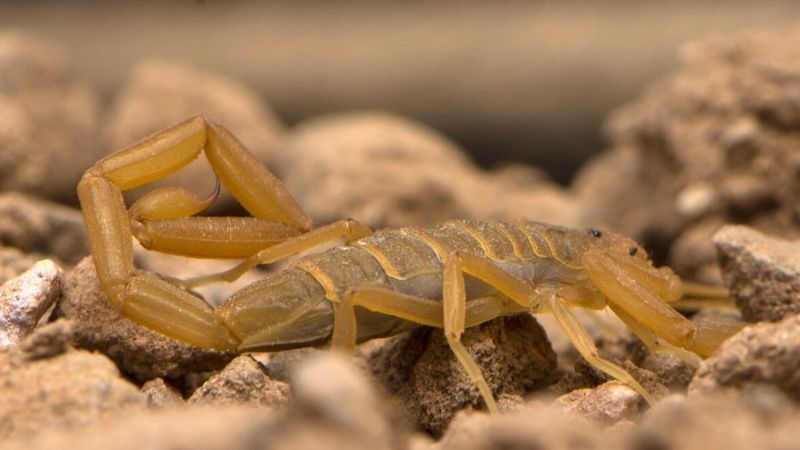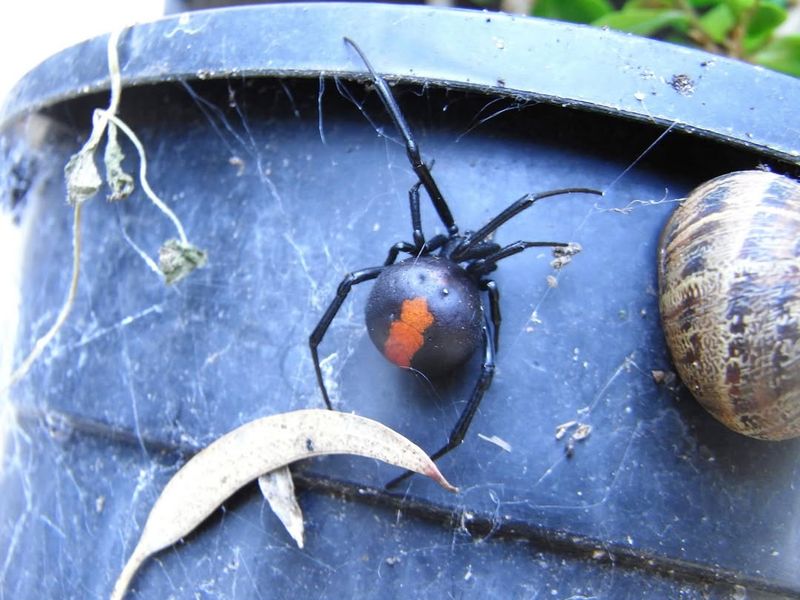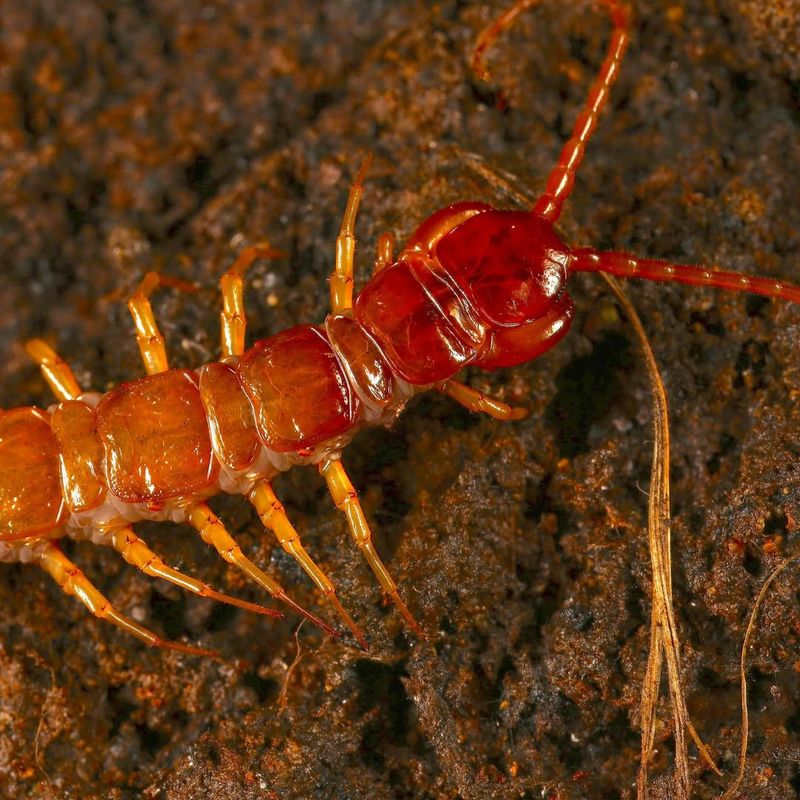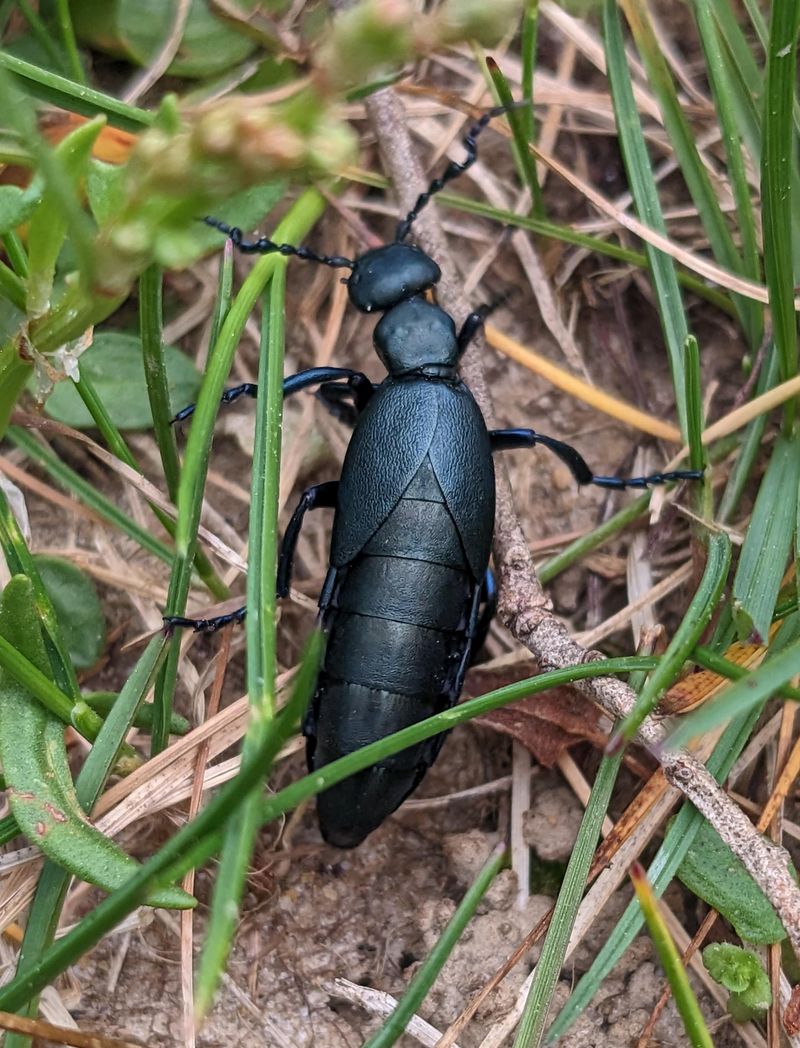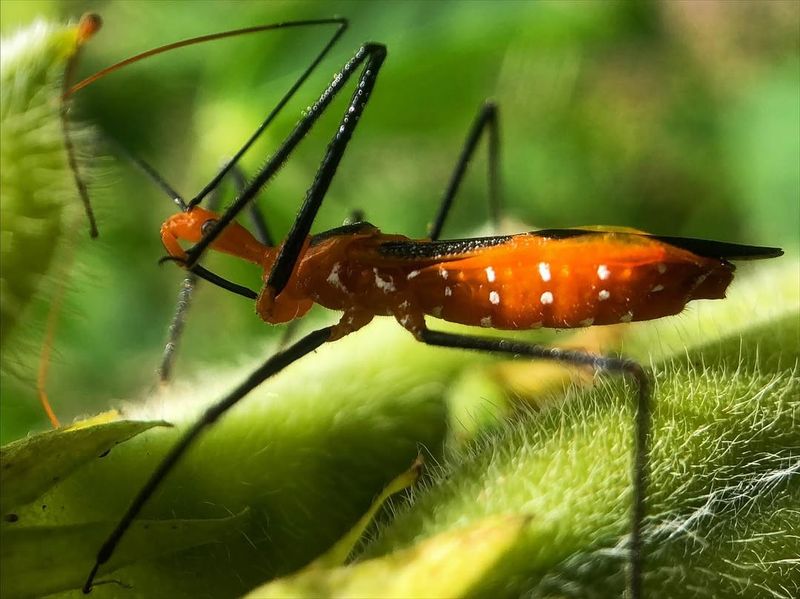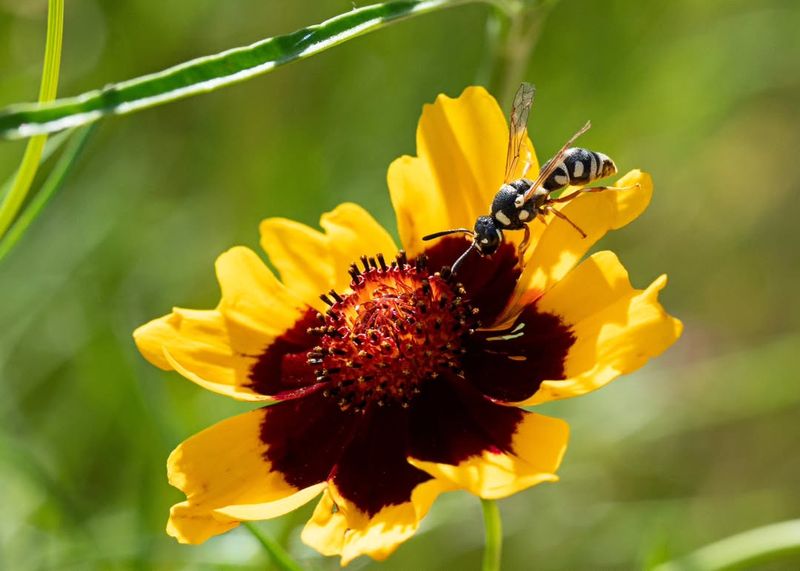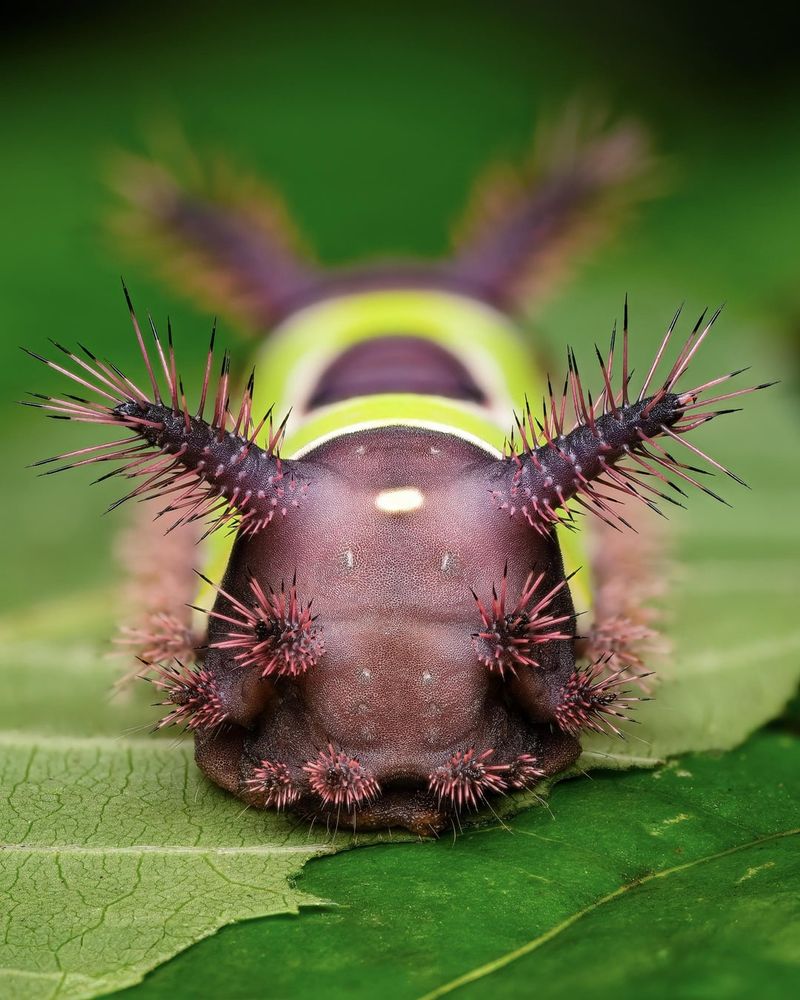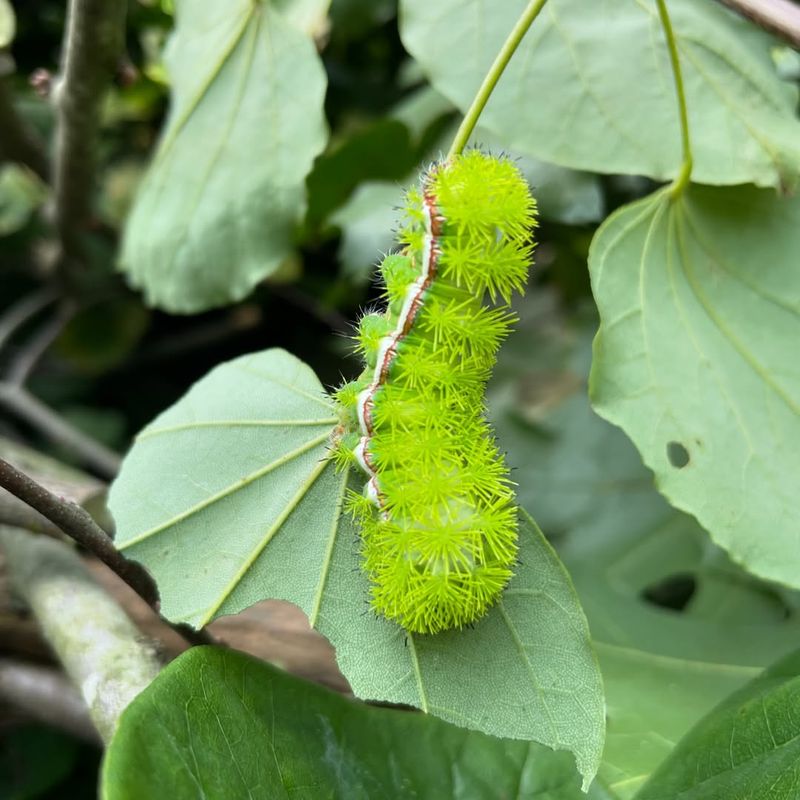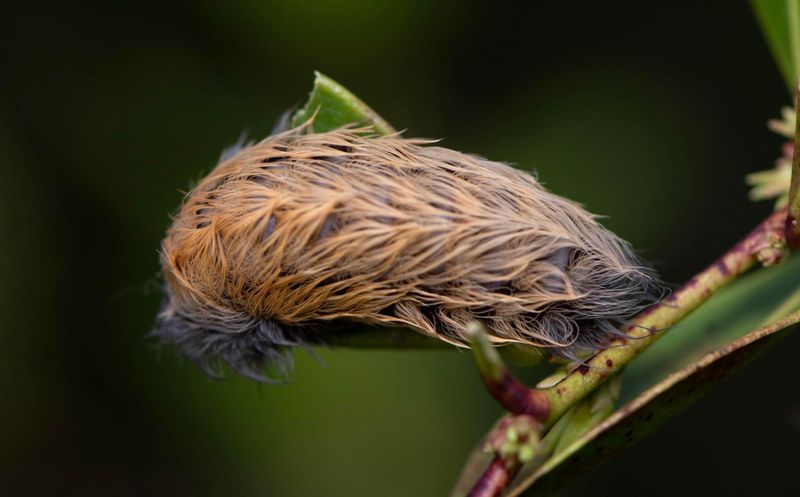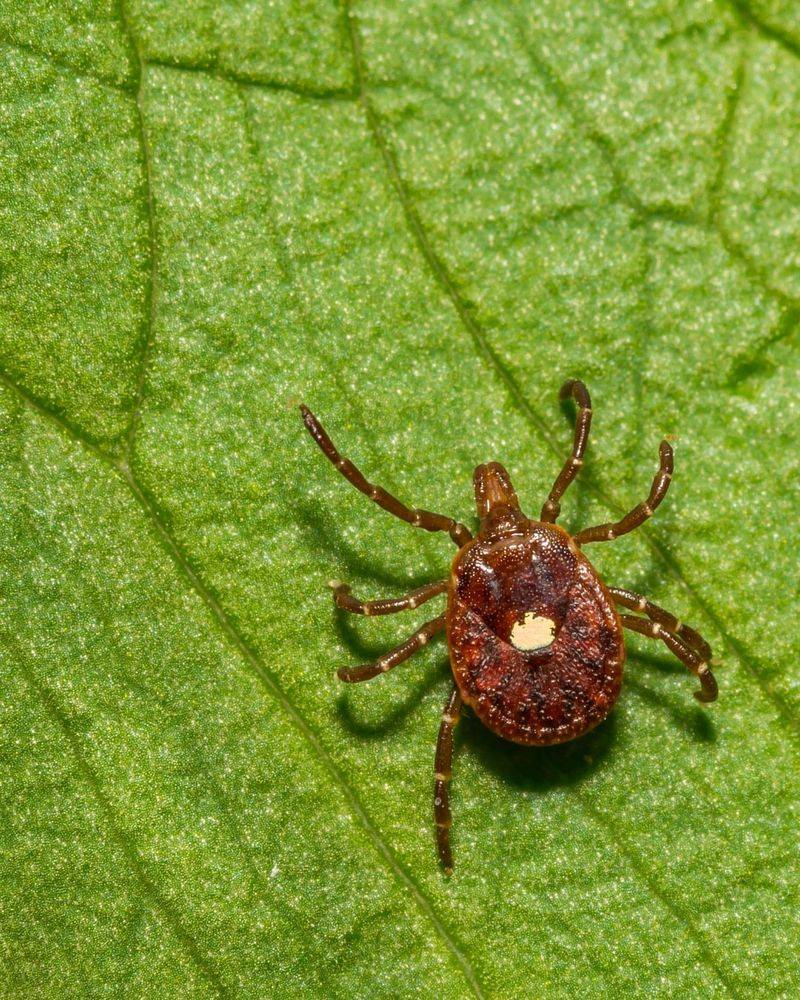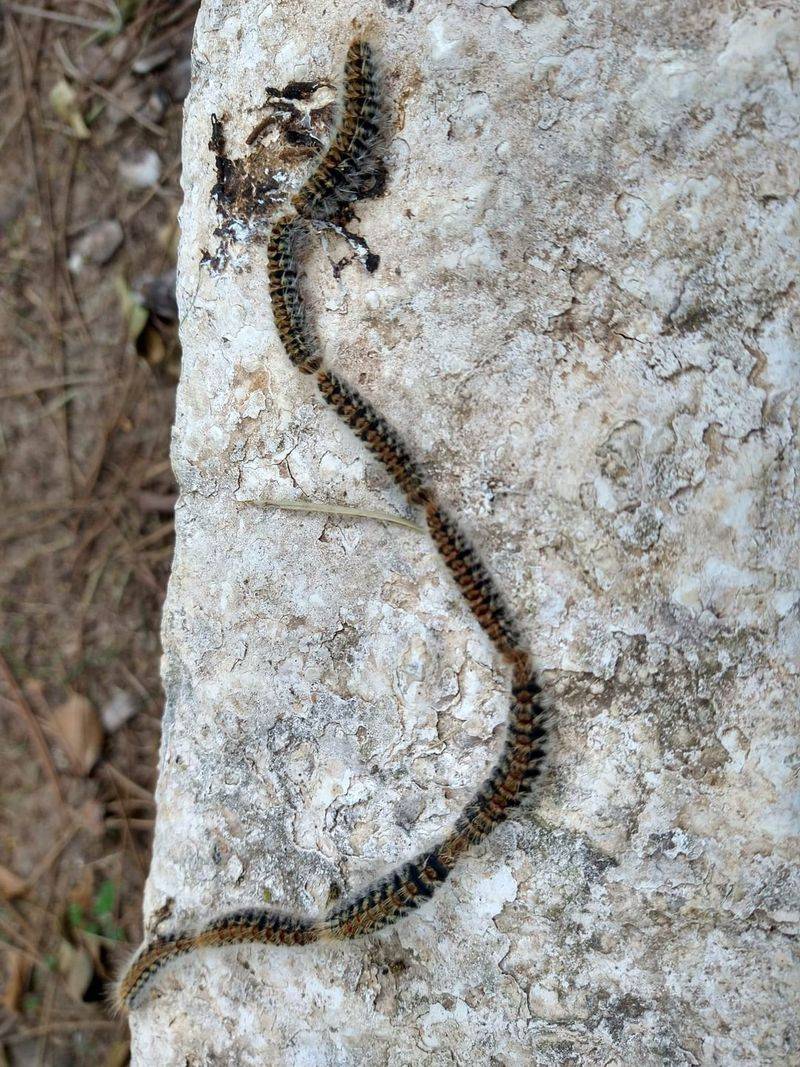If you’ve ever been surprised by a sting while weeding or watering, you’re definitely not alone—I’ve done my fair share of garden yelping. These little critters might be small, but they sure know how to make their presence known.
The good news? Once you can tell who’s who, it gets a lot easier to deal with them calmly and safely. Some are just passing through, others might be setting up shop, and a few can actually be helpful if left alone.
Here are 18 stinging pests you’re likely to spot and what to do when they show up.
1. Honey Bees
These fuzzy, golden-striped pollinators are garden heroes, responsible for helping plants produce fruits and seeds. They’re generally peaceful unless provoked or their hive is threatened. When disturbed, they can sting once, leaving their stinger behind.
To handle safely, wear light-colored clothing when gardening and avoid floral perfumes. If bees are hovering nearby, stay calm and move slowly away. Remember, honey bees are protected in many areas due to population declines, so consider calling a beekeeper rather than exterminating.
2. Yellow Jackets
Unlike their bee cousins, these aggressive wasps with bright yellow and black markings aren’t interested in your flowers. They’re attracted to proteins and sweets, making your picnic or barbecue their favorite dining spot. Yellow jackets can sting repeatedly and often attack in groups.
When gardening in areas where yellow jackets are active, avoid wearing bright colors or floral scents. Cover food and drinks outdoors, and keep garbage cans tightly sealed. If you discover a nest, it’s best to contact professional pest control rather than attempting removal yourself.
3. Paper Wasps
Famous for their umbrella-shaped nests made of papery material, these slender wasps with dangling legs are common garden residents. While less aggressive than yellow jackets, they’ll defend their colony if threatened. Their sting causes immediate, sharp pain followed by swelling.
Give paper wasp nests a wide berth when gardening, especially during morning and evening hours when they’re most active. If nests are built in high-traffic areas, consider having them professionally removed. For distant nests in garden areas, they can actually help control caterpillars and other pests.
4. Hornets
Larger than most wasps, hornets build enclosed paper nests often found in trees or under eaves. Their painful stings contain more venom than most other stinging insects, causing intense pain, swelling, and sometimes allergic reactions in sensitive individuals.
When gardening in areas where hornets are present, wear protective clothing and avoid sweet-smelling perfumes or lotions. If you spot a hornet nest in your garden, it’s best to contact professional pest control. Never attempt to remove or disturb a nest yourself, as hornets can become extremely aggressive when defending their colony.
5. Bumblebees
These plump, fuzzy pollinators with their distinctive buzzing sound are gentle giants of the garden. Despite their size, bumblebees rarely sting unless their nest is disturbed or they’re handled roughly. Their colonies are much smaller than honeybees, typically nesting in abandoned rodent burrows.
To coexist peacefully, avoid gardening near known nest sites and wear light-colored clothing. If you accidentally disturb a bumblebee, simply walk away slowly. These important pollinators benefit gardens tremendously, especially for plants that honeybees can’t effectively pollinate, so it’s best to leave them undisturbed.
6. Fire Ants
Reddish-brown with a nasty temperament, fire ants build distinctive mounded nests in sunny garden areas. When disturbed, they swarm aggressively, latching onto skin with powerful jaws before delivering multiple painful stings that burn like fire and form pustules.
Garden safely by wearing closed-toe shoes and long pants tucked into socks when working near fire ant territory. Keep an eye out for mounds and mark them to avoid accidental contact. For serious infestations near garden beds, consider targeted bait treatments rather than broad pesticides that might harm beneficial insects.
7. Velvet Ants
Despite their name, these fuzzy, brightly colored insects are actually wingless female wasps. Often sporting vibrant red or orange velvety hair, they’re sometimes called “cow killers” due to their extraordinarily painful sting. Fortunately, they’re solitary creatures that typically mind their own business.
When gardening in areas where velvet ants are common, wear gloves and be cautious when moving objects on the ground where they might be hiding. Their bright colors serve as a warning – if you spot one, simply leave it alone. These unusual insects parasitize other wasp species and generally don’t cause garden damage.
8. Scorpions
With their distinctive curved tails and pincer claws, scorpions are nocturnal hunters that hide in garden debris, under rocks, and in woodpiles during daylight hours. Most North American species deliver painful but non-lethal stings, causing localized burning, numbness, and sometimes swelling.
Protect yourself by wearing thick gardening gloves and shaking out stored garden tools before use. Reduce scorpion habitat by keeping gardens tidy, removing debris piles, and sealing cracks in garden structures. When gardening at dusk or night in scorpion-prone areas, use a UV flashlight—scorpions glow brilliantly under ultraviolet light.
9. Spiders
While most garden spiders are harmless and beneficial predators, species like black widows and brown recluses can deliver medically significant bites. Black widows have glossy black bodies with distinctive red hourglass markings, while brown recluses feature a violin-shaped marking on their backs.
When gardening, wear gloves and be cautious when reaching into dense vegetation or moving stored pots and equipment. Shake out gardening gloves before wearing them. Most spiders bite only when threatened or trapped against skin, so awareness of their potential hiding spots is your best protection.
10. Centipedes
These many-legged hunters with their flattened bodies and prominent antennae patrol garden soil and leaf litter in search of prey. While most garden centipedes are harmless, larger species can deliver painful bites with their modified front legs that function as venom claws.
When working in the garden, wear gloves and be cautious when lifting rocks, logs, or dense mulch where centipedes hide during daylight. Despite their intimidating appearance, centipedes are beneficial predators that help control pest populations. If you encounter one, simply let it continue on its way rather than handling it.
11. Blister Beetles
These elongated beetles contain a caustic substance called cantharidin that can cause painful skin blisters upon contact. Often found feeding on garden flowers and vegetables, they come in various colors including black, gray, and striped patterns. Their defense mechanism is particularly troublesome for gardeners.
Protect yourself by wearing gloves when handling plants where blister beetles are present. Never crush these insects against your skin—even dead beetles can cause blistering. If you find an infestation on prized plants, gently knock them into a bucket of soapy water rather than using broad-spectrum insecticides that harm beneficial insects.
12. Assassin Bugs
With their narrow heads and curved beaks, these beneficial predators help control garden pests by impaling them with their rostrum and injecting digestive enzymes. Despite their garden benefits, their painful defensive bite feels like a wasp sting and can cause prolonged discomfort.
When gardening, be aware that assassin bugs often hide under leaves or in flower clusters. Wear gloves and avoid handling these insects directly. If you spot their distinctive eggs (often in neat rows or clusters) or nymphs in your garden, it’s best to leave them alone—they’re working to reduce pest populations naturally.
13. Wasps
Beyond yellow jackets and hornets, numerous wasp species visit gardens, from tiny parasitic varieties to solitary mud daubers. Most hunt garden pests or collect nectar, making them beneficial despite their intimidating appearance and potential to sting when threatened.
Garden peacefully alongside wasps by staying calm when they’re nearby—sudden movements trigger defensive responses. Avoid wearing bright colors or floral scents that might attract them. For solitary wasps building mud tubes on garden structures, remember they rarely sting and help control caterpillars and spiders. Only remove nests if they’re in high-traffic areas.
14. Saddleback Caterpillars
Easily identified by the brown “saddle” marking on their green bodies, these striking caterpillars pack a painful punch. Their bodies are covered with urticating spines that inject venom when touched, causing intense burning pain, inflammation, and sometimes nausea in sensitive individuals.
When working around garden foliage, wear long sleeves and gloves, and inspect plants before handling them. If you need to remove these caterpillars from prized plants, use tools rather than your hands. Despite their defensive capabilities, these insects eventually transform into rather plain brown moths that pose no threat to gardeners.
15. Io Moths
The caterpillars of these beautiful moths are covered in branched spines containing irritating venom. Bright green with red and white stripes running down their sides, these caterpillars feed on a variety of garden plants and trees. Contact with their spines causes immediate burning pain and welts.
Protect yourself by wearing gloves and long sleeves when working around host plants like roses, apple trees, and corn. If you need to remove these caterpillars, use a stick or tool rather than your fingers. Despite their defensive capabilities as larvae, adult Io moths are harmless with stunning eyespot patterns on their wings.
16. Puss Caterpillars
Don’t let their cute, fuzzy appearance fool you—these teardrop-shaped caterpillars pack one of the most painful stings in the insect world. Hidden beneath their soft-looking “hair” are venomous spines that cause intense, radiating pain, rash, and sometimes systemic symptoms like headache and nausea.
When gardening in areas where these caterpillars are common, carefully inspect plants before handling them. Wear gloves and long sleeves, and teach children never to touch fuzzy caterpillars. If you find them on garden plants, remove them using tools rather than hands, or consider contacting pest control if infestations are severe.
17. Ticks
Though not traditional “stinging” pests, these blood-feeding arachnids lurk in garden vegetation waiting to latch onto passing hosts. Their bites can transmit serious diseases like Lyme disease, Rocky Mountain spotted fever, and alpha-gal syndrome, making them significant garden health hazards.
Protect yourself by wearing long pants tucked into socks, using repellent containing DEET or picaridin, and performing thorough tick checks after gardening. Create tick-resistant garden zones by keeping grass short, removing leaf litter, and creating gravel or wood chip barriers between wooded areas and garden spaces.
18. Processionary Caterpillars
Named for their habit of traveling nose-to-tail in long processions, these caterpillars are covered in tiny barbed hairs containing an irritating toxin. Contact causes painful rash, intense itching, and sometimes respiratory issues if hairs are inhaled. They’re typically found on pine and oak trees.
When gardening near host trees, wear protective clothing and avoid touching their distinctive silken nests. Never disturb or attempt to remove nests without proper equipment. If you discover an infestation, consider consulting an arborist or pest control specialist, as these caterpillars can cause significant tree damage in addition to their health risks.

